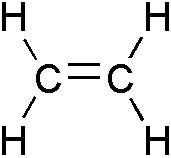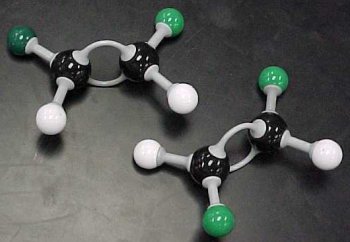Before we start though, here's some general information you should know about the diagrams:
- The atomic symbol represents the nucleus. Therefore you should write it in the middle.
- You must know the amount of valence electrons to draw the diagram
- Dots around the symbol represent the electrons
- There are four orbitals (one on each side of the nucleus) and each one can hold a maximum of 2 electrons
- Each orbital must have 1 electron before they start pairing up
- All valence electrons must be used
- Each element must have a full valence shell (8 electrons) except for H (2 electrons)
Ok now let's start making diagrams!
Ex. CH4
Step 1: Find the central atom. It's the one furthest from a full shell.
C=4 and H=1 but since H only needs 2 and C needs 8 then C is furthest away from a full shell therefore it is the central atom.

Step 2: Put C in the center to represent the nucleus then draw the dots around it to represent the valence electrons. Once you've done that, draw the H's around the C to make sure that they all have a full shell.
 And VOILA! YOU'RE DONE :D
And VOILA! YOU'RE DONE :DIf you want to do a structural diagram, just replace 2 electrons with lines. So it would look something like this..

Well that covers the basics of it. Here's a video about more complex dot diagrams such as ionic and covalent compounds.
http://www.youtube.com/watch?v=QKoA3fZ29B0&NR=1









